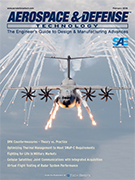Article
SAE course delivers an introduction to the latest aviation cybersecurity essentials
2019-06-11
SAE International’s two-day course, DO-326A and ED-202A: An Introduction to the New and Mandatory Aviation Cyber-Security Essentials, introduces attendees to industry best practices for real-world aviation cybersecurity risk assessment, development, assurance. ...SAE International’s two-day course, DO-326A and ED-202A: An Introduction to the New and Mandatory Aviation Cyber-Security Essentials, introduces attendees to industry best practices for real-world aviation cybersecurity risk assessment, development, assurance.


